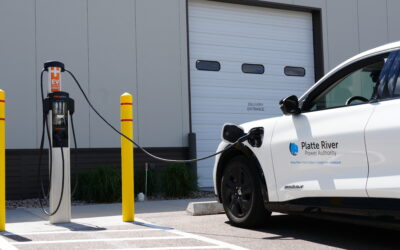
Flipping The Switch on Electric School Buses: A Clean Cities Technical Assistance Series
Clean Cities, along with the Alternative Fuels Data Center (AFDC) has launched a new technical series aimed at educating and assisting school bus fleets interested in adopting electric school buses. The eight-part series, consisting of short and digestible 10–20-minute video modules, along with educational handouts, covers topics ranging from electric utilities, vehicle requirements, charging infrastructure, infrastructure planning and solutions, vehicle in-use performance, driver and technician training, and cost factors.
The partnership forged between the Clean Cities Coalition and the AFDC is what has brought this series to life and will continue to make it a success. Clean Cities will continue to play the role of local expert by providing the assistance, information, and resources to successfully plan and execute alternative fuel vehicle and fueling infrastructure projects, specifically for electric school buses in this case. That, coupled with the AFDC’s extensive collection of information, data, and tools related to every technology and fuel in the Clean Cities portfolio; there are a wide variety of tools and resources available for fleets looking to electrify school bus fleets.
Today, there are close to 500,000 school buses on the road. However, less than 1% of school buses right now are electric, as diesel powered buses dominate the industry. John Gonzales of the National Renewable Energy Laboratory (NREL) had this to say about the opportunity:
Electric school buses provide an opportunity to reduce emissions from the vehicles that transport our most precious cargo. Minimizing tailpipe emissions from idling vehicles also helps improve air quality at schools, especially benefiting students with conditions like asthma. NREL recently launched new technical assistance resources to help fleets interested in adding electric school buses. Those are available online here.
The goal of this series is to help those who wish to implement electric school buses at a faster rate to have all the resources and information needed to understand the benefits and challenges of transitioning their fleets.
The timing of this technical series is aptly timed with the passing of the Bipartisan Infrastructure Law (BIL) provides $5 billion over five years (FY22-26) for the replacement of existing school buses with low- and zero-emission school buses. The Bipartisan Infrastructure Law provides an unprecedented amount of funding to clean a substantial portion of the nation’s feet of nearly 500,000 school buses. These new cleaner school bus replacements will produce either zero or low tailpipe emissions compared to their older diesel predecessors. School bus upgrades funded under this program will result in cleaner air on the bus, in bus loading areas, and in the communities in which they operate. More information on this can be found on the EPA’s website.
The first two parts of this series can be found on the AFDC’s website and your Clean Cities Coalition experts here at Drive Clean Colorado would love to assist you and your team in understanding why school bus electrification is right for you. Be on the lookout for the rest of the series and contact DCC with any questions.





